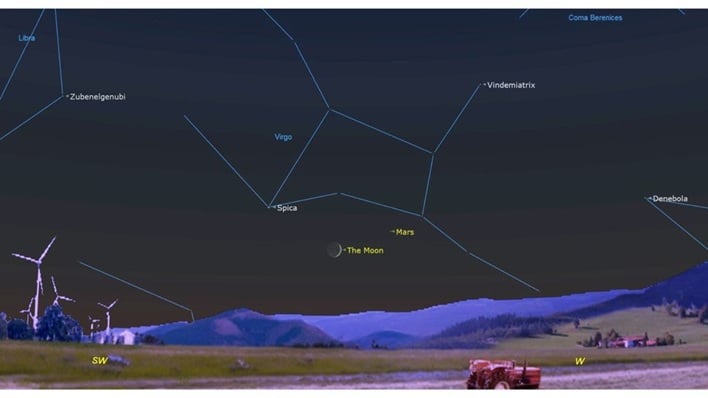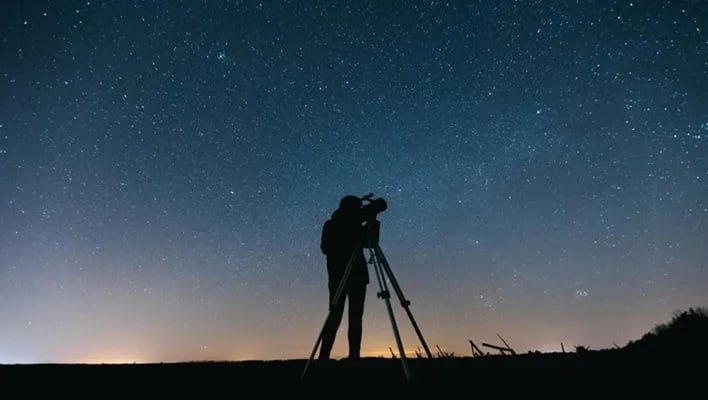Planetary Parade's Big Finale Is Mars Dancing With A Crescent Moon And It's Happening Tonight
August has been a fascinating month for stargazers, showcasing a rare six-planet lineup, a paired display of Venus and Jupiter, and the annual Perseids meteor shower. Even if you've missed it all, don't miss out on tonight's show.

At sunset, Mars will be visible about 10 degrees above the horizon. A 14%-lit crescent moon will sit next to it on the left, followed by the brightest star in the Virgo constellation, Spica. This stunning Spica-Moon-Mars lineup will appear low on the southwest horizon tonight.
By tomorrow, the crescent moon will be slightly brighter (21% lit) and will have moved past Mars and Spica. So you'll find a Moon-Spica-Mars lineup if you look southwest at dusk. By the way, Spica is 250 light-years away, so you're almost literally getting a sneak peek into the past if you catch this view. Additionally, the moon's dark side will glow faintly with Earthshine, a soft light created when sunlight reflects off Earth and back onto the moon. It's an amazing night for skygazers!

Planetary parades, events where multiple planets appear visibly in the night sky, don't always happen. While alignment involving four or five planets occurs every few years, others involving six or seven can be as rare as once a decade. Thankfully, you can get the chance to view these celestial shows using phone apps like Stellarium Mobile, Night Sky, or SkySafari.

